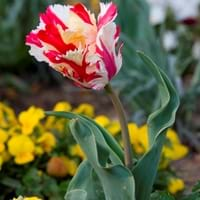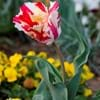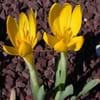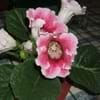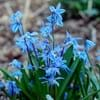Life Span
Annual and Perennial
Perennial
Type
Bulb or Corm or Tuber
Grass
Origin
Hybrid origin
China
Types
Not Available
Not Available
Number of Varieties
Not Available
Habitat
Fertile bottom land, Loamy soils, Well Drained
Forest margins, gardens, Grassland, Tropical regions
USDA Hardiness Zone
3-8
8-15
Sunset Zone
21,22
H1, H2, 8, 9, 14, 15, 16, 17, 18, 19, 20, 21, 22, 23, 24
Habit
Clump-Forming
Clump-Forming
Minimum Width
Not Available
Flower Color
Light Yellow, Light Pink, Peach, Light Green, Dark Salmon
Not Available
Flower Color Modifier
Bicolor
Bicolor
Fruit Color
Green, Tan
Not Available
Leaf Color in Spring
Green
Light Green, Dark Green
Leaf Color in Summer
Light Green
Light Green
Leaf Color in Fall
Several shades of Green
Light Green, Dark Green
Leaf Color in Winter
Light Green
Light Green, Dark Green
Leaf Shape
Lance shaped
Grass like
Plant Season
Spring
Spring, Summer, Fall, Winter
Sunlight
Full Sun, Partial Sun
Full Sun, Partial Sun, Partial shade
Type of Soil
Loam, Sand
Loam, Sand
The pH of Soil
Neutral
Acidic, Neutral, Alkaline
Soil Drainage
Well drained
Average
Bloom Time
Early Spring, Spring
Not Available
Tolerances
Drought
Drought
Where to Plant?
Bedding, Container, Ground
Ground, Pot
How to Plant?
Micropropagation, Offsets, Seedlings, Tissue culture
Seedlings, Transplanting
Plant Maintenance
Medium
Medium
Watering Requirements
Allow to dry out slightly between watering, Average Water Needs, Do not water from above
Keep the ground moist but not water-logged, Requires regular watering, Use and maintain water-efficient soaker hoses, Use Mulches to help prevent water loss during hot and windy weather, Water every two or three days during warmer months, Water twice a day in the initial period
In Summer
Lots of watering
Lots of watering
In Spring
Moderate
Moderate
In Winter
Average Water
Average Water
Soil pH
Neutral
Acidic, Neutral, Alkaline
Soil Type
Loam, Sand
Loam, Sand
Soil Drainage Capacity
Well drained
Average
Sun Exposure
Full Sun, Partial Sun
Full Sun, Partial Sun, Partial shade
Pruning
Remove damaged leaves, Remove dead branches, Remove dead leaves
Remove damaged leaves, Remove dead branches, Remove dead leaves
Fertilizers
All-Purpose Liquid Fertilizer
All-Purpose Liquid Fertilizer
Pests and Diseases
Aphids, Red blotch, Tulip Viruses
Red blotch
Plant Tolerance
Drought
Drought
Flower Petal Number
Single, Semi-Double
Single
Foliage Texture
Medium
Medium
Foliage Sheen
Matte
Matte
Attracts
Bees, Butterflies
Birds
Allergy
Nasal irritation, Skin irritation, Skin rash
no allergic reactions
Aesthetic Uses
Mass in beds, Mixed Border, Showy Purposes
Beautification
Beauty Benefits
Not Available
Not Available
Environmental Uses
Air purification
Air purification
Medicinal Uses
No Medicinal Use
Not Available
Part of Plant Used
Flowers
Whole plant
Other Uses
Basketary, Used for fragrance, Used for Landscaping
Culinary use, Used in construction, Used in Furniture, Used in making musical instruments, Used in paper industry
Used As Indoor Plant
No
No
Used As Outdoor Plant
Yes
Yes
Garden Design
Bedding Plant, Container, Cutflower, Edging, Feature Plant, Foundation, Mixed Border
Container, Feature Plant, Hedges, Screening / Wind Break, Tropical
Botanical Name
TULIPA 'Apricot Parrot'
BAMBUSA multiplex 'Alphonso-Karrii'
Common Name
Apricot Parrot Tulip, Parrot Tulip
Alphonse Karr Bamboo, Clumping Bamboo, Hedge Bamboo
In Hindi
Parrot Tulip
अल्फोंस Karr बांस
In German
Papageientulpe
Alphonse Karr Bamboo
In French
Parrot Tulip
Alphonse Karr Bamboo
In Spanish
Parrot Tulip
Alphonse Karr Bambú
In Greek
παπαγάλος τουλίπα
Alphonse Karr Μπαμπού
In Portuguese
Parrot Tulip
Alphonse Karr Bamboo
In Polish
tulipany papuzie
Alphonse Karr Bamboo
In Latin
Parrot tulip
Alphonse Karr Bamboo
Phylum
Ascomycota
Not Available
Class
Triumph
Not Available
Clade
Angiosperms
Angiosperms, Commelinids, Monocots
Subfamily
NA
Bambusoideae
Number of Species
Not Available
Not Available
Importance of Parrot Tulip and Alphonse Karr Bamboo
Want to have the most appropriate plant for your garden? You might want to know the importance of Parrot Tulip and Alphonse Karr Bamboo. Basically, these two plants vary in many aspects. Compare Parrot Tulip and Alphonse Karr Bamboo as they differ in many characteristics such as their life, care, benefits, facts, etc. Every gardener must at least have the slightest clue about the plants he wants to plant in his garden. Compare their benefits, which differ in many ways like facts and uses. The medicinal use of Parrot Tulip is No Medicinal Use whereas of Alphonse Karr Bamboo is Not Available. Parrot Tulip has beauty benefits as follows: Not Available while Alphonse Karr Bamboo has beauty benefits as follows: Not Available.
Compare Facts of Parrot Tulip vs Alphonse Karr Bamboo
How to choose the best garden plant for your garden depending upon its facts? Here garden plant comparison will help you to solve this query. Compare the facts of Parrot Tulip vs Alphonse Karr Bamboo and know which one to choose. As garden plants have benefits and other uses, allergy is also a major drawback of plants for some people. Allergic reactions of Parrot Tulip are Nasal irritation, Skin irritation and Skin rash whereas of Alphonse Karr Bamboo have no allergic reactions respectively. Having a fruit bearing plant in your garden can be a plus point of your garden. Parrot Tulip has no showy fruits and Alphonse Karr Bamboo has no showy fruits. Also Parrot Tulip is not flowering and Alphonse Karr Bamboo is not flowering . You can compare Parrot Tulip and Alphonse Karr Bamboo facts and facts of other plants too.
